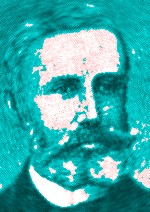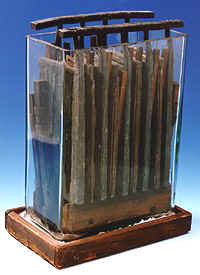Gaston Planté (1834-1889)
 Raymond Gaston Planté was born April 22, 1834, Orthez, France. Planté was
a French physicist who produced the first electric storage
battery, or accumulator, in 1859.
In improved form, his invention has become the most widely used rechargeable
battery. Planté followed
an academic career, beginning in Paris as a lecture assistant in physics at
the Conservatory of Arts and Crafts in 1854 and, six years later, rising to
the post of professor of physics at the Polytechnic Association for the Development
of Popular Instruction.
Raymond Gaston Planté was born April 22, 1834, Orthez, France. Planté was
a French physicist who produced the first electric storage
battery, or accumulator, in 1859.
In improved form, his invention has become the most widely used rechargeable
battery. Planté followed
an academic career, beginning in Paris as a lecture assistant in physics at
the Conservatory of Arts and Crafts in 1854 and, six years later, rising to
the post of professor of physics at the Polytechnic Association for the Development
of Popular Instruction.
In 1859 Planté began experiments that resulted in construction of a battery for the storage of electrical energy; his first model contained two sheets of lead, separated by rubber strips, rolled into a spiral, and immersed in a solution containing about 10 percent sulfuric acid. A year later he presented a battery to the Academy of Sciences consisting of nine of the elements described above, housed in a protective box with the terminals connected in parallel. His battery could deliver remarkably large currents.
Initial capacity was quite limited since the positive plate had little active material available for reaction. About 1881, Faure and others developed batteries using a paste of lead s for the positive plate active materials. This allowed much quicker formation and better plate efficiency than the solid Planté plate. Although the rudiments of the flooded lead-acid battery date back to the 1880's, there has been a continuing stream of improvements in the materials of construction and the manufacturing and formation processes. Since many of the problems with flooded lead-acid batteries involved electrolyte leakage, many attempts have been made to eliminate free acid in the battery.

Connect with us
Contact us today